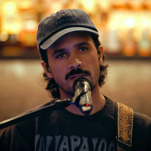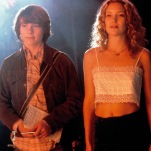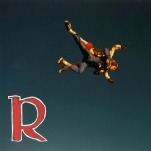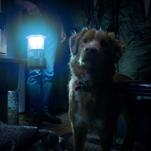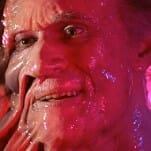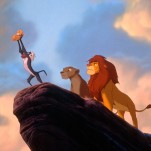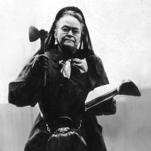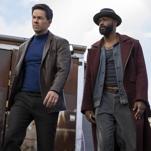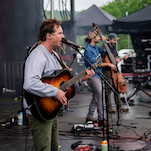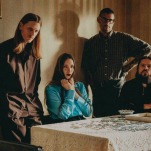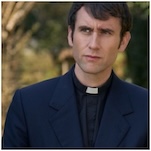Why Is It So Hard for Film and TV to Get Silicon Valley Right?
Photos: National Geographic/Bettina Strauss; HBO; AMC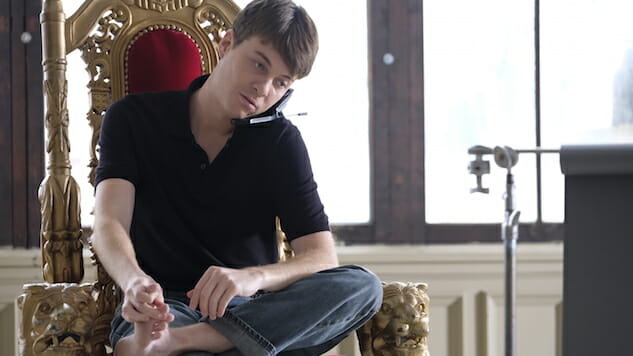
“To understand how the Internet happened, you have to understand the people who came to Silicon Valley in the 1990s… They didn’t just make the Internet. They made history.” —Valley of the Boom
As my grandmother might say, Marc Andreessen (John Karna) is a smug little shit: a button-downed, khaki-panted, unfortunate-banged wunderkind with an arrogant glint in his eye. In the first episode of National Geographic’s everything-but-the-kitchen-sink docudrama Valley of the Boom, the Netscape co-founder—now venture capitalist—emerges as the series’ most compelling character, and perhaps its most familiar: Young, pasty, and prickly, uncomfortable with the niceties of office culture, he’s reminiscent of Mark Zuckerberg (Jesse Eisenberg), in The Social Network, or Richard Hendricks (Thomas Middleditch), in Silicon Valley, or even the demanding Apple co-founder (Michael Fassbender) in Steve Jobs. Still, he’s framed as one of our tour guides through “the Browser Wars,” explaining the internal dynamics at Netscape, the company’s boffo 1995 IPO, and its ultimately fatal confrontation with Microsoft in Big Short-style asides to the camera. “In the start-up world,” he says at the end of the series premiere, summing up in one sentence the entire gestalt of Silicon Valley’s place in pop culture, “you’re either a genius or an idiot.”
Valley of the Boom, written and directed by Matthew Carnahan (House of Lies) and executive produced by Arianna Huffington, is not without its (useful) idiots—including those seduced by streaming video fraudster David Kim Stanley (a.k.a. Michael Fenne), so wildly overplayed by Steve Zahn that his segments seem spliced in from another series. Indeed, among Valley of the Boom’s problems is the fact that it uneasily combines four (or more) stories into an single, grand narrative: three dramatizations, one each of Netscape, Fenne’s Pixelon, and nascent social networking site TheGlobe.com, plus a docuseries on Silicon Valley from the rise of the consumer Internet through the dot-com bubble, featuring interviews with many of the actors’ real-life counterparts. (Andreessen, notably, is not among them, which may explain why Karna’s is the series’ standout performance—there’s no corresponding talking head to break the spell.) The more fundamental issue, though, is its emphasis on genius, at least in its form as a film and TV commonplace. It has the aphoristic wisdom of the Valley’s sages (“The main thing is the main thing is always the main thing,” says Netscape CEO Jim Barksdale, played by Bradley Whitford). It has idealistic developers compromising with businessmen to feed the shareholder beast (including a grocery-story shopping cart filled with The Globe’s ill-considered acquisitions). It even has the lavish parties and spectacular product launches by which Silicon Valley sells itself to the press and the public (such as Fenne’s ludicrous “iBash ’99” concert, with artists from KISS to LeAnn Rimes). Though it strives to scrutinize the Valley’s penchant for mythmaking, Valley of the Boom ultimately reflects Huffington’s (and the industry’s) own blind spots. Its valediction of the Internet’s early years is as hard to swallow, in the current climate, as the publisher who made a fortune on the backs of unpaid bloggers remaking herself as an evangelist for the end of “the burnout epidemic.”
Whether pop culture can adequately capture Silicon Valley as a sinecure of immense, often rapacious social and economic power, rather than as a Wild West of individualism and technological innovation, is not a new question: In a cautiously optimistic column on HBO’s Silicon Valley, The New Republic’s Rachel Syme argues that the series’ fifth season reflects a “major recalibration,” one in which “it feels that the characters might at least begin to grapple with some of the dark corners of the Valley mentality.” Feels, might, begin: The blurriness of Syme’s description suggests potential as yet untapped, and Mike Judge’s satire mostly hews to the rhythms of the late-stage sitcom, inventing increasingly rococo ways for programmers Gilfoyle (Martin Starr) and Dinesh (Kumail Nanjiani) to torture each other (not to mention Richard), and replacing one insufferable ham (T.J. Miller’s entrepreneurial caricature, Erlich Bachman) with another (Jimmy O. Yang’s Chinese stereotype, Jìan-Yáng). Unsurprisingly, for a series that made its name lampooning the Valley’s heaviest hitters—through eccentric venture capitalists Peter Gregory (the late Christopher Evan Welch) and Laurie Bream (Suzanne Cryer); flash-in-the-pan bad boy billionaire Russ Hanneman (Chris Diamantopoulos); failing-upward know-nothing Nelson “Big Head” Bighetti (Josh Brener)—Silicon Valley still points its sharpest knives at Richard’s former boss, sometime collaborator, and frequent rival, Gavin Belson (Matt Ross), the megalomaniacal CEO of a Google stand-in named Hooli. And, just as the Trump administration regularly outstrips Veep, Belson’s most outrageous hijinks struggle to keep pace with those of the real Silicon Valley’s erstwhile presidential hopefuls, 420 lovers, and disguised fugitives: “What I have built,” he proclaims in the Season Five premiere, during his own induction into the Innovation Hall of Fame, “is a far greater achievement than any of the ancient world.”
Here, as when it compares the poaching of a competitor’s COO to an extramarital affair or sends up the corporate jargon used to justify being an asshole (“radical candor,” “ruinous empathy”), Silicon Valley uses its merciless humor as an antidote to the industry’s oily self-congratulations; on the other end of the spectrum, in Richard’s sweet partnership with the loyal, profoundly decent Donald “Jared” Dunn (the brilliant Zach Woods), the series generates an unexpected warmth, handing us a rooting interest in a comedy full of repellent characters. Unfortunately, just as Valley of the Boom’s strongest subplot—a David-and-Goliath arc pitting Netscape against Microsoft—is lost, or muffled, in the series’ multi-stranded chaos, Silicon Valley is too diffuse to forge these strengths into a sustainable comic backbone. The series successfully erases the distinction between genius and idiot—but against the real evils and excesses of its chosen subject, even the biggest laughs seem small.
![]()
Pointed satire might raise the hackles of thin-skinned Silicon Valley executives (see also: Peter Thiel), but it’s drama that holds out hope of capturing, and perhaps countering, the industry’s role in the evisceration of privacy, the dissemination of misinformation, the rise of right-wing extremism, and the end of democracy. Or should. Valley of the Boom lionizes Netscape and The Globe, buying into the “Golden Geeks” trope of Andreessen’s Time cover, and Silicon Valley’s fifth season rests, a half-measure too credulous, on Richard’s dream of building an egalitarian, peer-to-peer Internet, but at least the two series are capable of planting their tongues in their cheeks; Steve Jobs, written by Aaron Sorkin and directed by Danny Boyle, is so convinced of its subject’s genius, not to mention its own, that it manages to inflate the myth it’s meant to dismantle. “Artists lead, and hacks ask for a show of hands,” Jobs rages in a late-night board meeting, his back against the wall, and in the closing sequence the film assents: Jobs, beginning the last of the film’s three product launches, assumes his place in the pantheon alongside Albert Einstein and Pablo Picasso, their faces projected above the stage.
Steve Jobs arguably stumbles into a category error here. The iPod, to which Jobs alludes in the penultimate scene, may one day deserve to be considered the 21st century’s equivalent of Cubism or the general theory of relativity, or it may simply be seen as a sleek, compact Walkman. But its more flagrant sin to forget that “genius” is a subjective assessment, a flawed, frustratingly human algorithm through which we pass the data of a person’s life and render it comprehensible. Though the film waves its hands at Jobs’ rough treatment of former partner Steve Wozniak (Seth Rogen), whose technical expertise was instrumental in Apple’s early success, and Kate Winslet’s sterling performance as Jobs’ consigliere, marketing whiz Joanna Hoffman, forces the viewer to see beyond the oracular figure himself, Steve Jobs ultimately dismisses their contributions as incidental to Jobs’ big ideas. In similar fashion, Valley of the Boom suggests that Netscape’s anti-trust case against Microsoft opened the door to competitors like Google, yet allows the company’s chief legal counsel, Roberta Katz (Rebecca Husain) only one or two lines; in Silicon Valley, Monica Hall (Amanda Crew), an associate partner at a series of VC firms, plays straight woman—and often savior—against the shenanigans at Pied Piper, never to become a character in her own right. “I’m your closest confidante, your best friend… Your work wife,” Joanna pleads in the second act of Steve Jobs, after learning that he’s has been withholding a secret, but the film never treats theirs as a partnership of equals—and not just because she’s left in the dark.
Even at its most artful, the “Great Man” theory of history—the genius/idiot binary—not only downplays the efforts of women like Hoffman, Katz, and Hall. By speaking the names of Jobs and other CEOs of his ilk in the same breath as the most influential inventors and artists of the modern age, this framework erases the fact that Silicon Valley’s largest corporations are as aggressively, heedlessly capitalist as the monopolies of late 19th century, its “visionaries” and “thought leaders” the robber barons of our own Gilded Age. David Fincher and Aaron Sorkin’s The Social Network is the Citizen Kane of the social media generation, turning Zuckerberg’s break-up with his college girlfriend, Erica Albright (Rooney Mara), into his “Rosebud,” but in closing with the image of Zuckerberg refreshing his friend request to Erica over and over, the film still frames the damage wrought by Facebook as being done mostly to the man himself.
Of course, part of the problem with on-screen depictions of Silicon Valley, as F. Scott Fitzgerald understood of motion pictures, is that no one film or TV series can keep the “whole equation” in its head: Valley of the Boom’s useful, clever explainers (of, say, IPO mechanics) are subsumed by other distractions; Silicon Valley’s lacerating insults becomes muddied by boilerplate gags; Steve Jobs’ exquisite focus is aimed in the wrong direction; The Social Network’s depiction of Zuckerberg as the ultimate smug little shit, despite being as epic as “In the Hall of the Mountain King,” still falls short of Facebook’s influence, and now perhaps its crimes. In the final estimation, though, the shortcoming that ties together these and other depictions of Silicon Valley is their profound lack of interest in understanding people as people, reducing the Valley’s human quotient to a series of zeroes and ones—genius, idiot—and focusing instead on what they made.
It may be that the more hopeful cast of Valley of the Boom is a reflection of the era in which it’s set, that my yearning for art that grapples more honestly with Silicon Valley’s particular combination of humans, corporations, and machines is mostly misplaced. But the finest film or TV series yet made on the subject, the exception—the challenge—to all of the tropes enumerated here, is the one that explicitly acknowledges the connection: “The project gets us to the people,” Donna Clark (Kerry Bishé) says, by way of apology, in the magnificent series finale of Halt and Catch Fire, “because it’s people that got me where I am.” It wasn’t always so. At the outset, Christopher Cantwell and Christopher C. Rogers’ intimate saga of American life from the rise of personal computing to the dawn of the Internet devoted too much attention to its own brooding “genius,” Joe MacMillan (Lee Pace). Over the course of four seasons, though, the series widens the aperture, examining both the possibilities and pitfalls of technology at human scale: There are, alongside romances and friendships made through the tubes and wires, broken marriages, estranged business partners, even, in the presciently dystopian Season Three entry “You Are Not Safe,” a manifesto that doubles as a suicide note.

In her memorable speech, through which she repairs her relationship with her “last and best partner,” Cameron Howe (Mackenzie Davis), Donna ably sums up these endeavors, and the cost thereof. Still, the episode’s most significant moment comes later, as she and Cameron imagine what they might have built. I failed to see it at the time, but their conversation knowingly mirrors the outline of Silicon Valley mythmaking, and then, like a dream or a dust mote, brushes it away. “Trading sentences as equal partners, Donna and Cam imagine the start of something, and its subsequent conclusion, as the light of the Phoenix logo flickers on, then off,” I wrote then:
“The first week, the Series A, the IPO; the culture, the job cuts, the eventual impasse. But in this recursion there is evolution, wisdom, more hope than heartache; in this memory of something that never existed, they write a new ending to the story they already know. The scene, set in the old Mutiny office—which rose from the ashes to become Comet, and may yet rise from the ashes again—is so quiet, so simple, so delicately drawn and deeply felt, that it demands no description; it is “just being,” as Gordon [Scoot McNairy] advises, and that is more than enough.”
“There was definitely a phoenix-like element to the dream of a free browser,” former Netscape employee Tara Hernandez explains, tellingly, in the final episode of Valley of the Boom, and of film and TV’s attempts to depict Silicon Valley, only Halt and Catch Fire has managed to render this cycle of birth, destruction, and rebirth at human scale. After all, it is a process too beautiful and too terrible, too auspicious and too frightening, to be reduced to an algorithm. Art worth savoring requires a palette much more complex than that of winners and losers, geniuses and idiots. Otherwise it’s no better than a series of zeroes and ones.
Valley of the Boom premieres Sunday, Jan. 13 at 9 p.m. ET. Season Five of Silicon Valley is now streaming on HBO GO and HBO NOW. Halt and Catch Fire is now streaming on Netflix. The Social Network and Steve Jobs are available for rent on iTunes, Google Play, Amazon Prime Video, and other streaming platforms.
Matt Brennan is the TV editor of Paste Magazine. He tweets about what he’s watching @thefilmgoer.
